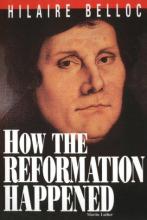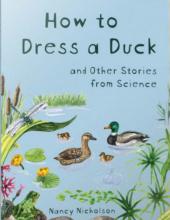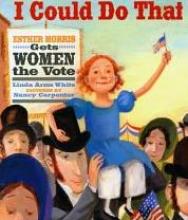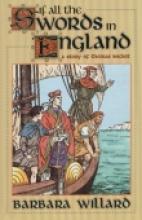No name
How the Catholic Church Built Western Civilization
How the Reformation Happened
This book is a surprisingly readable and interesting account of "How the Reformation Happened". Although it is written from a Catholic perspective, Mr. Belloc is very fair in dishing out the blame to the appropriate people on both sides. The years covered are 1517 (when Martin Luther affixed his protest against the Indulgences to a church door in Wittenberg, Germany) to 1648, but also includes commentary of the implications of the "Reformation" on our own times. He covers all the major countries involved and is very skilled at explaining the essentials of what happened and the lessons we should take from it. This is the answer for homeschoolers looking for the whole story of what is so often misrepresented in History texts – whether Protestant or Secular. It makes good reading for adults who are teaching younger children or for high schoolers to read on their own. Includes a complete index.
How to Celebrate Christmas as a Catholic
This inexpensive booklet ($12.95 for 50) is a good start for those wishing to better understand Catholic customs and a holy celebration of Christmas. You would need to do further research to implement some of the customs in your home, but the information is readily available on the Internet and elsewhere.
full color pamphlet
How to Dress a Duck and Other Stories from Science
This book offers thirty-six stories about God's amazing world that very nicely brings science back to its creator and helps children make connections between faith and reason. We've had the earlier edition of this book for a number of years and I have found many tidbits about nature that were new and very interesting to me - especially information about why God made things the way that he did and what is good and useful about his creation.
This new edition includes many new stories and looks more like a grade school workbook - in size and appearance as well as having space for the students to answer the chapter questions right in the book. In addition to the Catholic content I really like this book because 1. it is loaded with interesting content, 2. it is written in an appealing story-like format, 3. it is not "dumbed-down" or written in a condescending tone like so many textbooks. Here's a brief excerpt to give you a sense of the style and content:
"God has a similar system for supplying water to places that don't get much rain in the summer. Instead of a freezer, God uses tall, snow-covered mountains to store up icy snow. In some mountain ranges, like the Rocky Mountains that stretch north and south across Canada and the United States, peaks often receive thirty or forty feet of snow each year. That is nearly enough snow to bury a Ferris wheel! Even after winter has passed, the cool mountain air allows the snow to melt very slowly. Melting snow slips into creeks and rivers that carry needed water to farms and cities far away. Some of those farms and cities don't get much rain in the summer. Some of them don't even have snow in the winter. But the people who live there are happy to drink and swim in the water that came from God's faraway frozen mountains." (from "Merciful Rain" pgs. 59-61)
This book can be used as a science supplement or as a non-fiction reading comprehension workbook.
How-to Book of the Bible
Editorial Review: Perhaps you know very little about the Bible … or enough to realize there’s so much more to discover! Maybe your previous attempts to read the Bible have not been fruitful, and you don’t get much out of the readings at Mass. You observe the role the Bible plays in the lives of others and feel that you’re missing something. The How-To Book of the Bible, by Karl A. Schultz, is your key to unlocking this treasure. Unlike other Bible-related books, this one not only introduces you to the Scriptures but also helps you develop a deep, fulfilling, and lasting bond with the Bible. I believe this would make a fantastic choice for a high school homeschool student who needs a year of Bible. The format and language will appeal to the young student and in comparison with the dryness of the texts available to homeschoolers, this will shine. I would love to see a workbook companion for this, complete with tests and an answer key!
I Am Special
This religious education program contains 30 lessons and assumes that one lesson will be completed in a one-hour class each week. Unit One includes thirteen lessons designed to help children develop positive attitudes about themselves by learning about names, hands, feet, and the five senses. Unit Two's eleven lessons investigate various things given to us by God, such as families, friends, animals, and trees. Unit Three's five lessons focus on the holidays of Thanksgiving, Advent, Christmas, Valentine's Day, and Easter/Spring. The final lesson is on Growing. A heavy emphasis is placed on music and singing, as well as finger play activities, of which some are original and others traditional. An optional music cassette or CD is available but was not reviewed. Each lesson's craft activities may require a teaching assistant as many involve cooking, baking, scissors, or messy materials. Despite the detailed organization, considerable preparation time is necessary for many lessons.
One weakness of this popular program is that it is generically Christian. I can easily see this course being used in a preschool religious education classroom of any Christian denomination. The religious content includes a very brief, original, conversational prayer in each lesson, references to God with very simplistic adaptations of Bible verses, and a very simple retelling of the Christmas and Easter stories. No content was noted as being specifically Catholic. No priest, religious, or saint figure appears among the 105 flannel board figures. There are no church or crucifix images. There are no traditional Catholic prayers, even the very simplest Sign of the Cross, other than a meal blessing. No catechetical information of any kind is taught directly. With such a strong emphasis on music, this course could have easily begun teaching basic Catholic prayers or traditional hymns by taking advantage of the ability of children of this age to memorize easily.
5th edition, Nihil Obstat, Imprimatur
Teacher's Guide (spiral-bound softcover, 236 pages plus appendices), Student Activity Book (softcover 112 pages), Blackline Masters (Looseleaf, 62 pages), Flannel Board Packet (Looseleaf cardstock, 20 pages)
I could do that! Esther Morris gets Women the Vote
I, Juan de Pareja
I, Juan de Pareja, is biographical fiction, set in Spain in the first half of the seventeenth century. It tells the story of Diego Rodriguez de Silva y Velazquez, the Court painter in Spain, through the eyes of his personal servant, Juan de Pareja. Juan was part of Diego Velazquez's inheritance, and became his personal aide. Because of his nature, Juan doesn't resent his master and becomes a beloved member of the household.
This story tells of the mutual respect that two men can have for each other, even though one is a slave and the other his master. Although it is forbidden for a slave to learn or practice the arts in Spain at that time, Juan pays close attention to his master and learns to paint in secret. But is learning to paint worth his guilt? Is it worth the guilt of having stolen paints and the terror of being discovered?
I, Juan de Pareja, is an excellent story that I'd recommend for children ages 9 to 16. The reason I recommend it for older children is that there is some wanton cruelty, and death is a sub-theme of the novel. It can also be used as a read-aloud to older children and would be an excellent addition to your study of Spain or the Renaissance. This book should be readily available at your local library, or even a good used book store.









